37 gallery wall ideas - inspiring looks and expert tips on how to display your artwork
Gallery wall ideas are a wonderful way to add personality to your home, so be inspired by our favorite looks and take tips from the experts on how to master this on-trend look

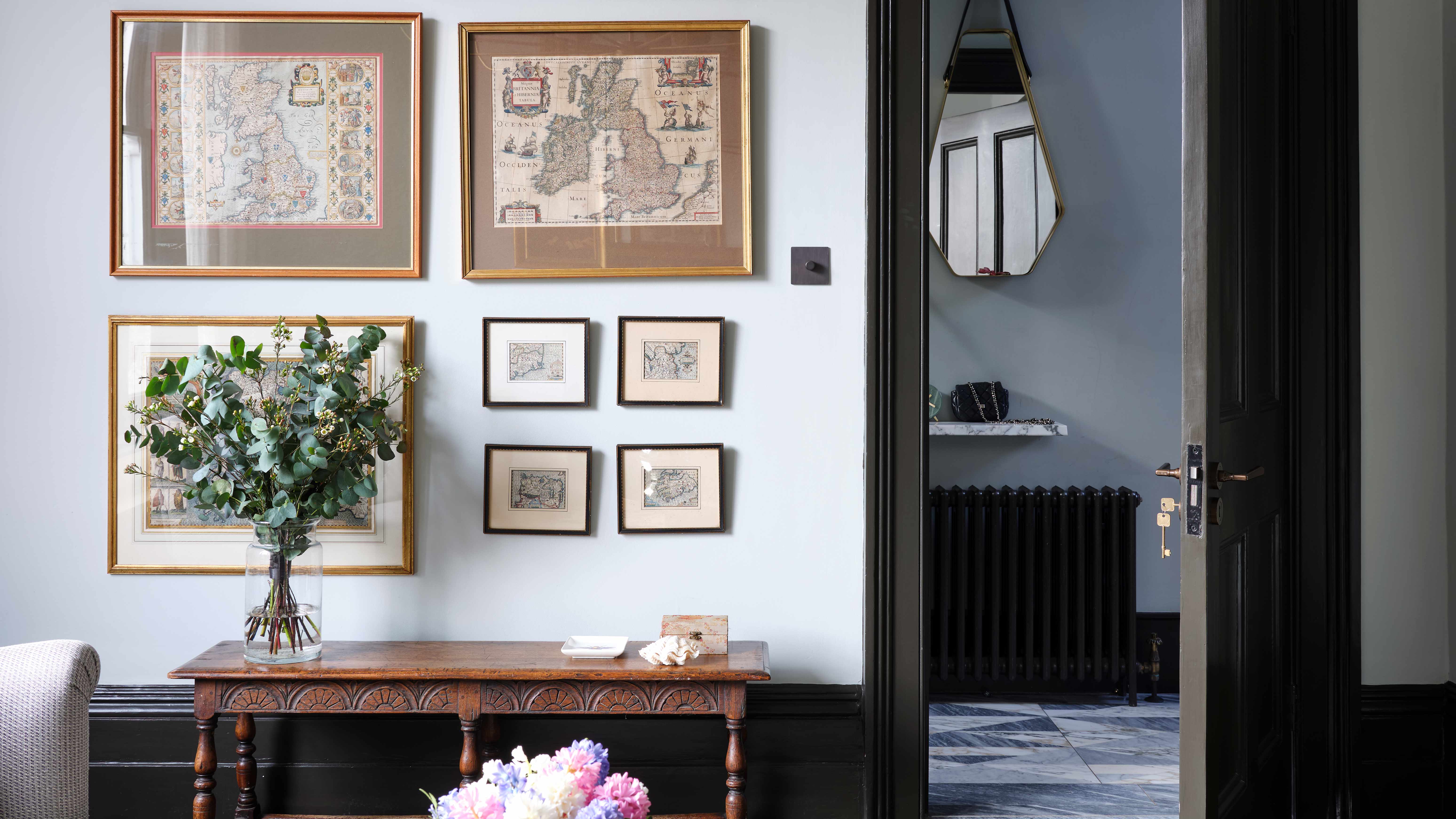
Stylish gallery wall ideas are becoming almost an essential for any modern home, who doesn't have at least one in their home? And gallery walls have changed shape since becoming such a huge trend a few years ago, no longer are they just about displaying prints and artwork in neat frames in grid-like layouts. Now you can make a gallery wall out of anything – hats, shoes, postcards, clocks, mirrors, antique painting we could go on. They are such an easy way to update any room and bring in texture, color, pattern, and interest.
So how do you go about curating a stylish gallery wall? Well, we asked the experts as well as pulled together all our favorite ideas to get you inspired...
1. Go for a minimalist approach to a gallery wall
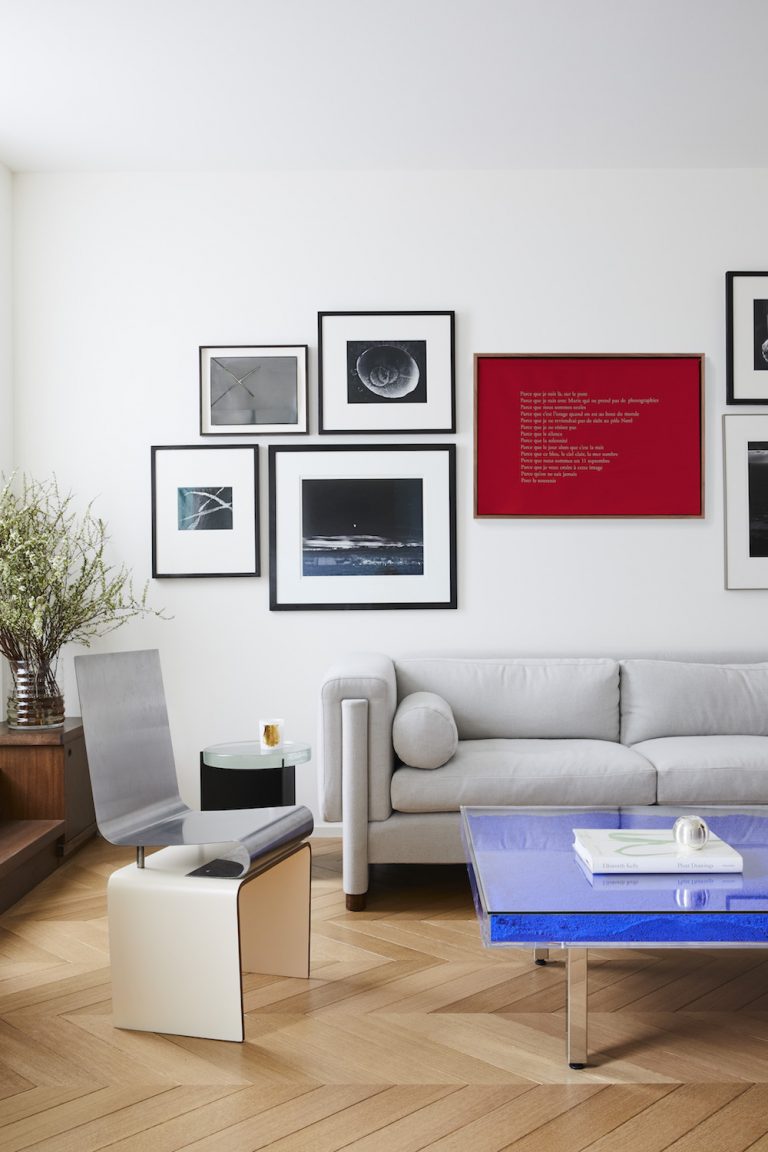
This living room gallery wall has a very edited feel, owed to the modern furniture, white walls and very pared-back prints.
2. Add a vintage twist to a modern space
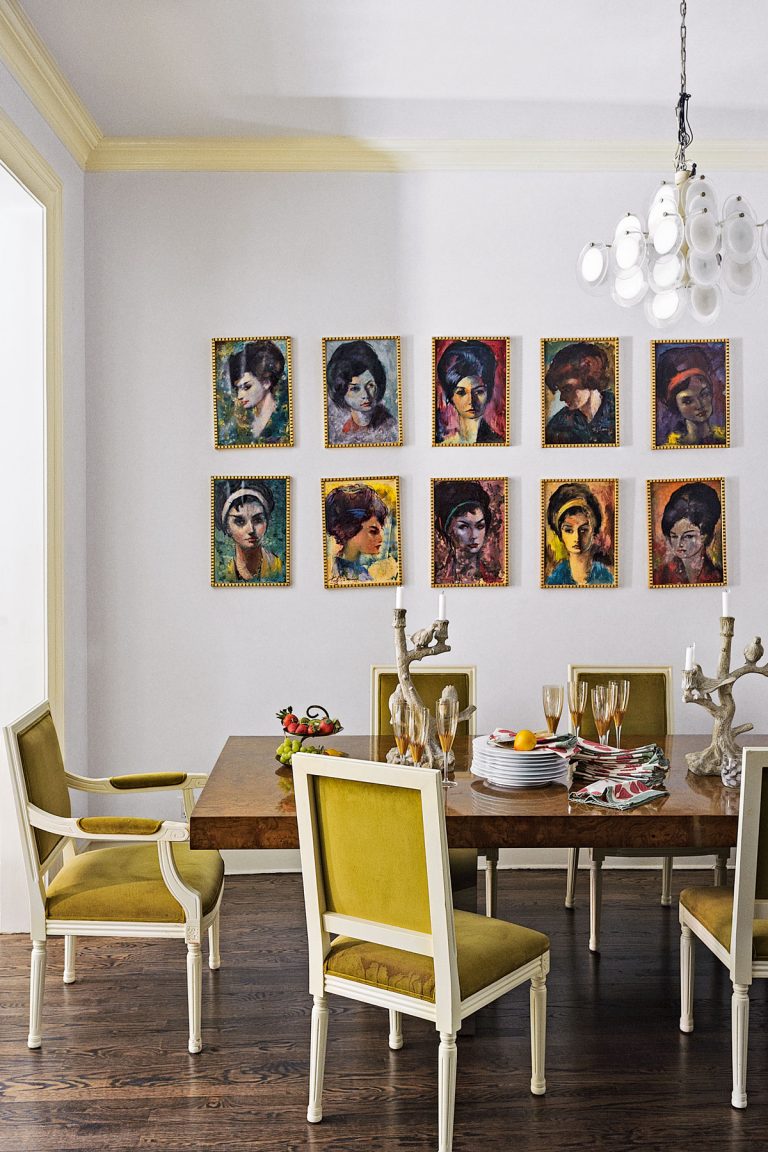
This collection of colourful portraits was snapped up in a junk shop.
3. Pick the right frames

This gallery wall is in clothing brand Tuckernuck's head office - proof that a home office can take a gallery wall - and features favourite images from past Tuckernuck photo shoots.
- Explore more of Tuckernuck's cool office design
4. Don't just stick to prints
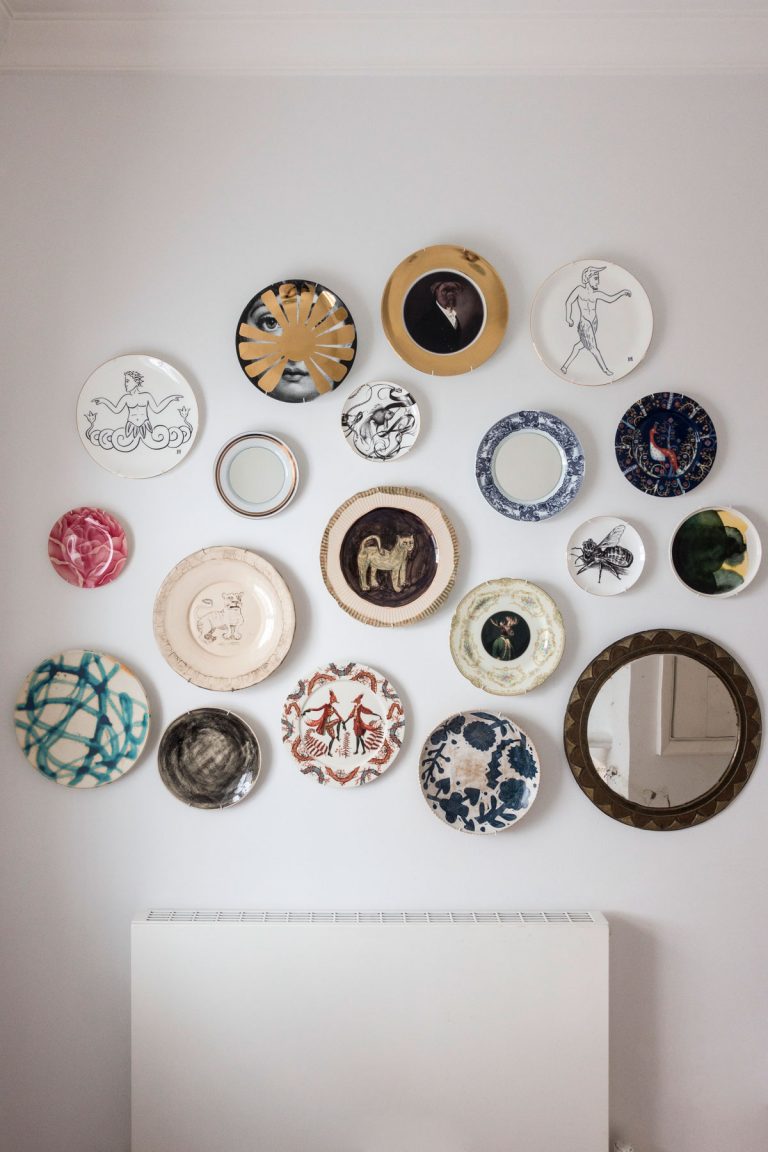
This plate wall keeps growing and is a work in progress; the owner keeps adding to it as he finds new pieces and arranging as he sees fit.
5. Choose a neutral color scheme
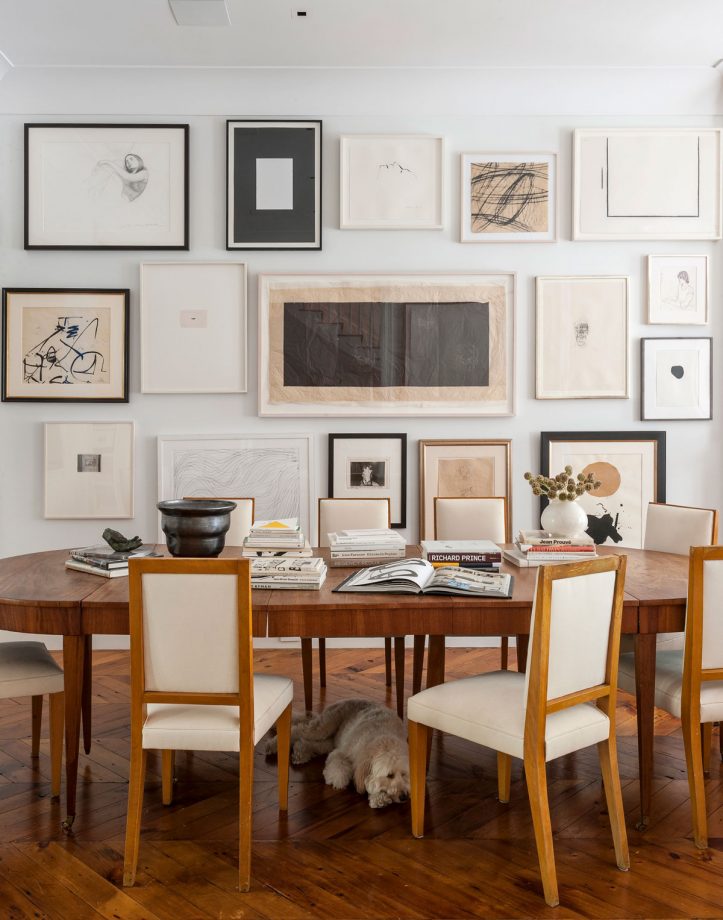
The dining area has a pared-down colour scheme of off-white and warm wood tones, while natural wood textures and a gallery of art work add visual interest - its in keeping with the vogue for beige living room ideas. This gallery wall feels cohesive thanks to its cream, beige and black colour palette, further reflected in the dining furniture.
The Livingetc newsletters are your inside source for what’s shaping interiors now - and what’s next. Discover trend forecasts, smart style ideas, and curated shopping inspiration that brings design to life. Subscribe today and stay ahead of the curve.
- See also: white living room ideas
6. Reflect light around a small space with mirrors
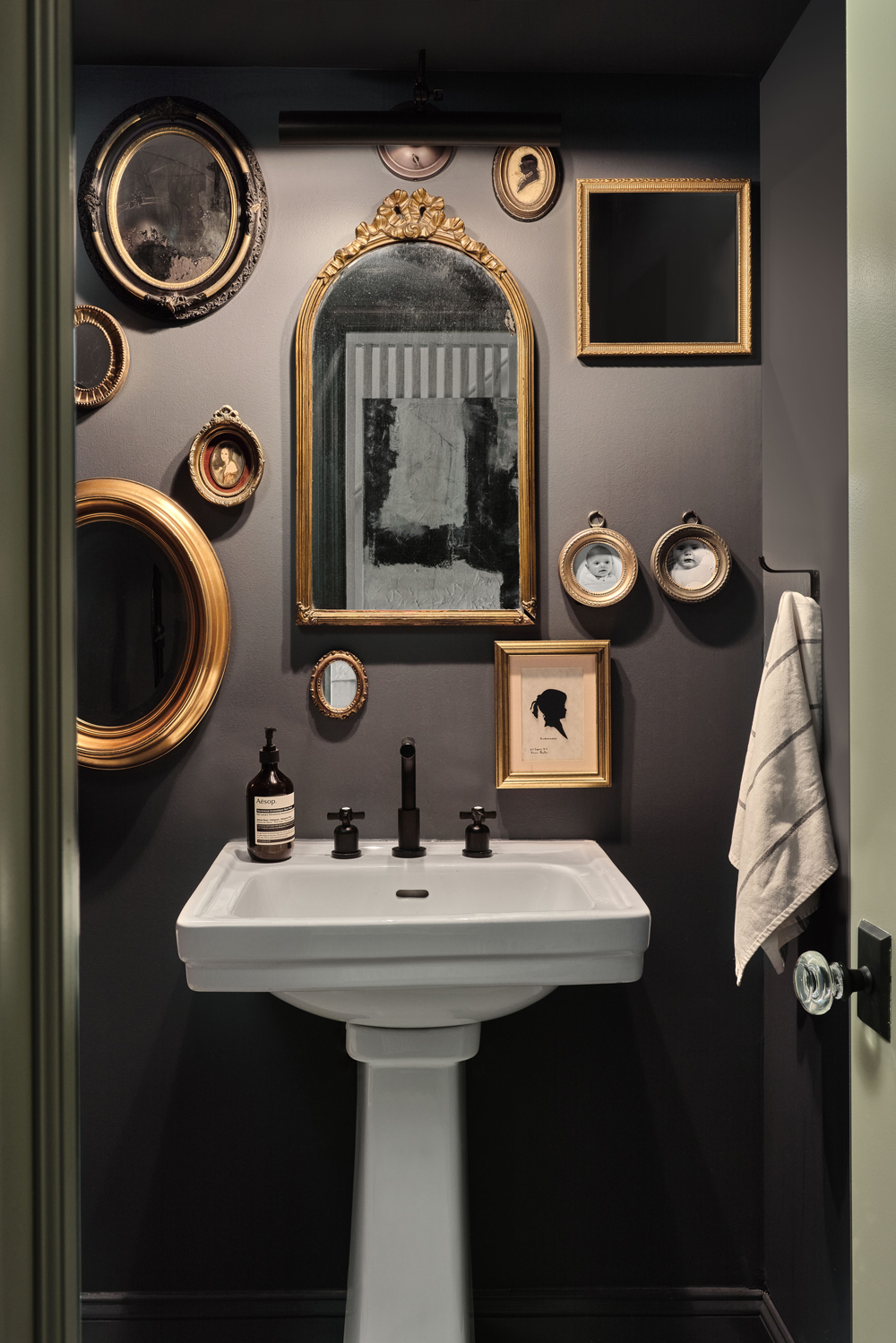
Vintage mirrors in different shapes and sizes create an eye-catching feature in this black cloakroom space. Vintage inspired portrait drawings were squeezed in between.
7. Decorate with something unexpected

Interior designer Crystal Sinclair collected breadboards over time, and used them to create a rustic gallery wall.
8. Create shapes with a gallery wall
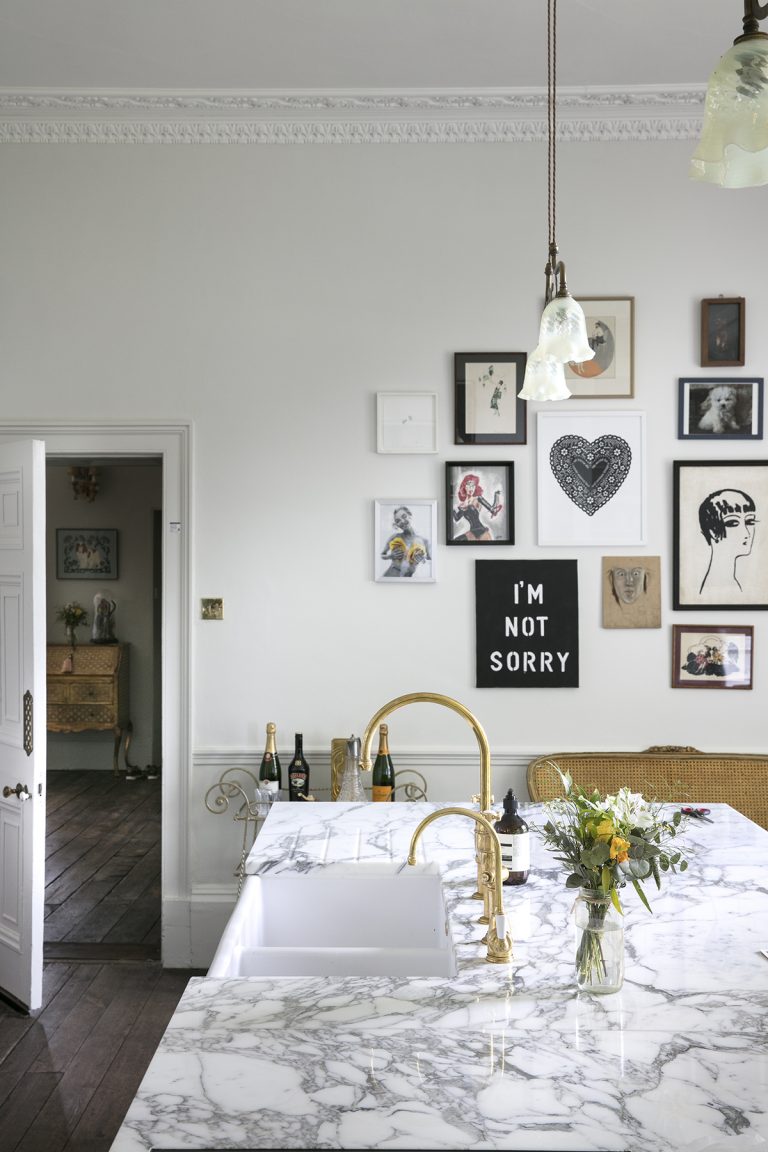
This gallery wall sits in Pearl Lowe's country kitchen and features an eclectic mix of pictures that were collected over time, along with an ‘I’m Not Sorry’ lightbox by Zoe Grace.
- Explore more of Pearl Lowe's 11 bedroom Georgian mansion in Somserset
9. Add quirk with a plate display

Get the look: The plates are from Toast. This is the Hague chandelier by Abigail Ahern. The table was made bespoke, with legs from Wicked Hairpins. The dining chairs are from eBay. The Sex Pistols artwork is by Jamie Reid at Isis Gallery. The rug is from CarpetVista.
A wall of pastel plates creates impact in this dining area (the dining plates make rather fitting decor).
10. Spell It Out
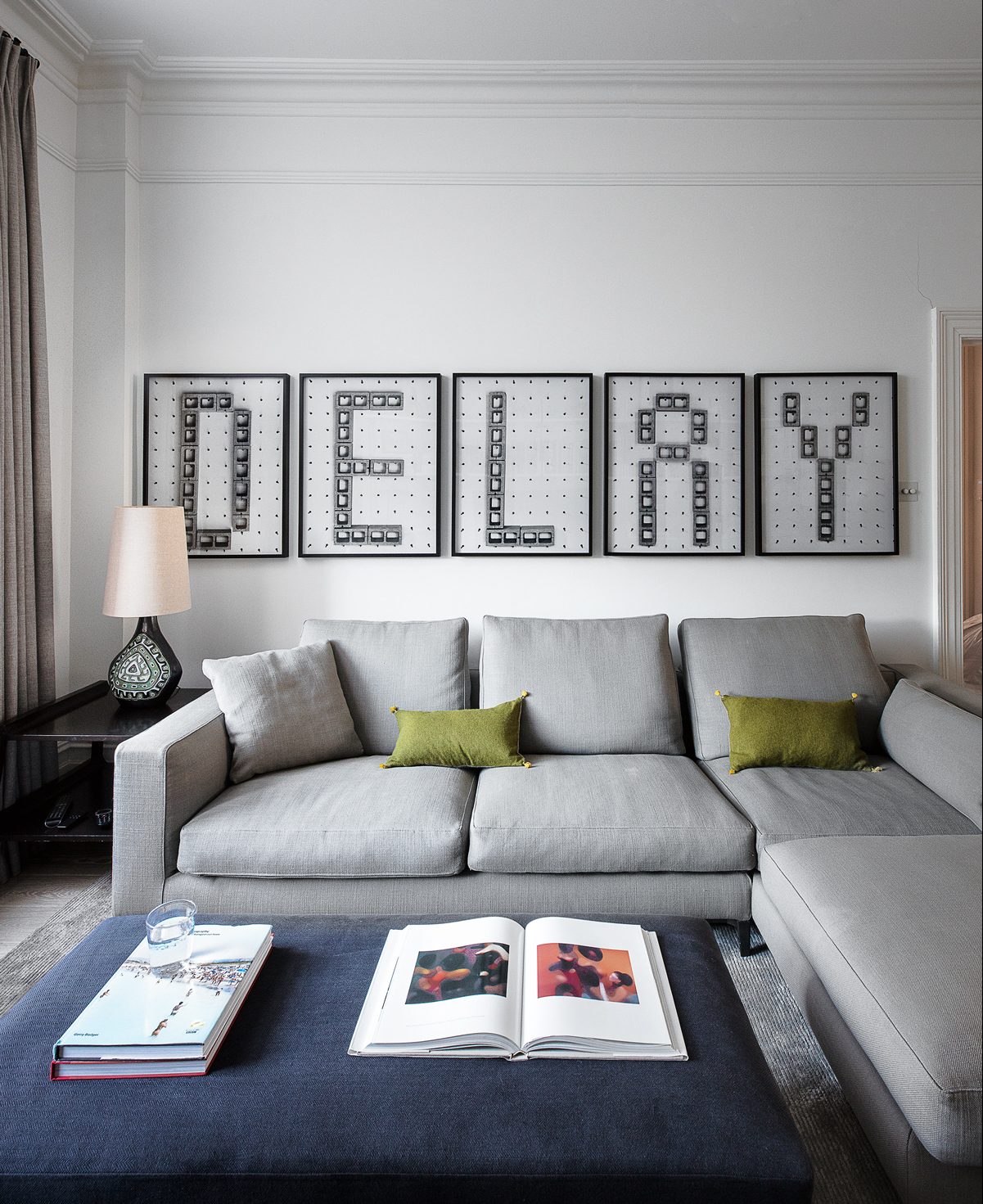
Almost too organised to be deemed a gallery wall, this set of five framed prints spell out a word to create a relaxed snug that's forgiving for procrastinators.
- See more grey living room ideas
13. Framed Illustrations
Zoe Feldman designed this office space for Tuckernuck's. The gallery wall features toungue-in-cheek renditions of emojis, done by Tuckernuck’s Creative Director Sophie.

14. Vintage Touch
A carefully curated mix of antique and modern gives this home a unique style and sense of personality. Here, vintage oil paintings in gilded traditional frames contrast against the modern rug, chaise long and of course the classic Saarinen tulip side table.
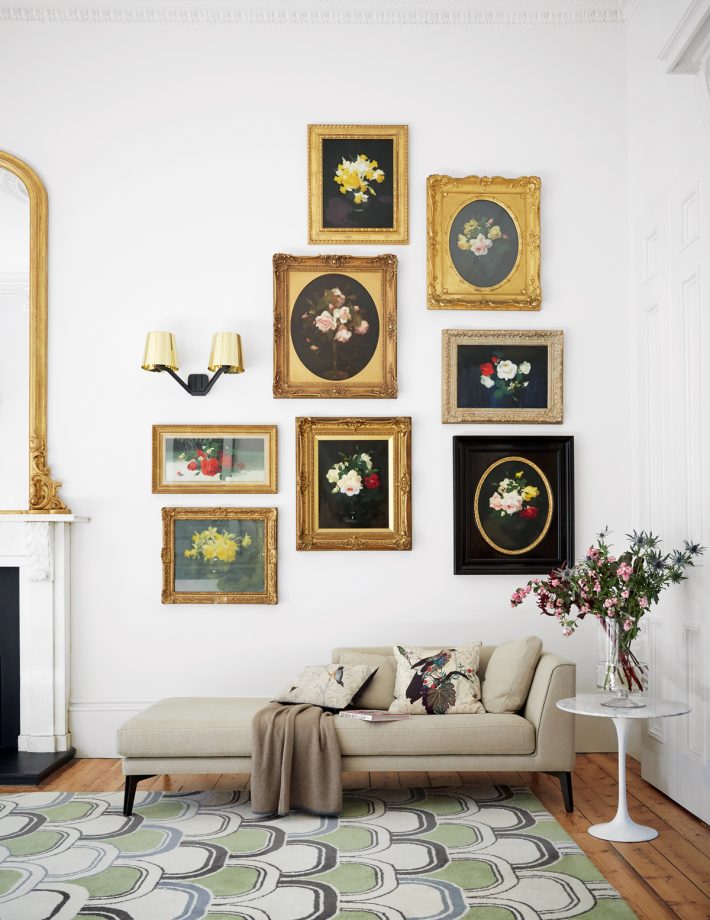
Get the look: Above the chaise is a collection of floral paintings by James Stuart Park. The chaise is by Matthew Hilton.
15. Hats Off
We've frequently seen gallery walls of panama hats or straw hats, and they create a relaxed, beachy look. But here designer Studio Peake created an English eclectic look with fez hats.

Get the look: Headboard is made bespoke by Studio Peake in Penny Morrison fabric. Cushions are Susan Deliss. Bedside Lamp is made from an old stair spindle. Bedside table is Kalinko.
- Explore more of this colourful London apartment designed by Studio Peake
16. Colour Coding
Similarly, this pastel themed dining space boasts an eclectic gallery wall that feels calming and unobtrusive. The painted radiators work well with the vintage paintings. It’s colour coding, but with the end result feeling fluid and flowing rather than too obvious.
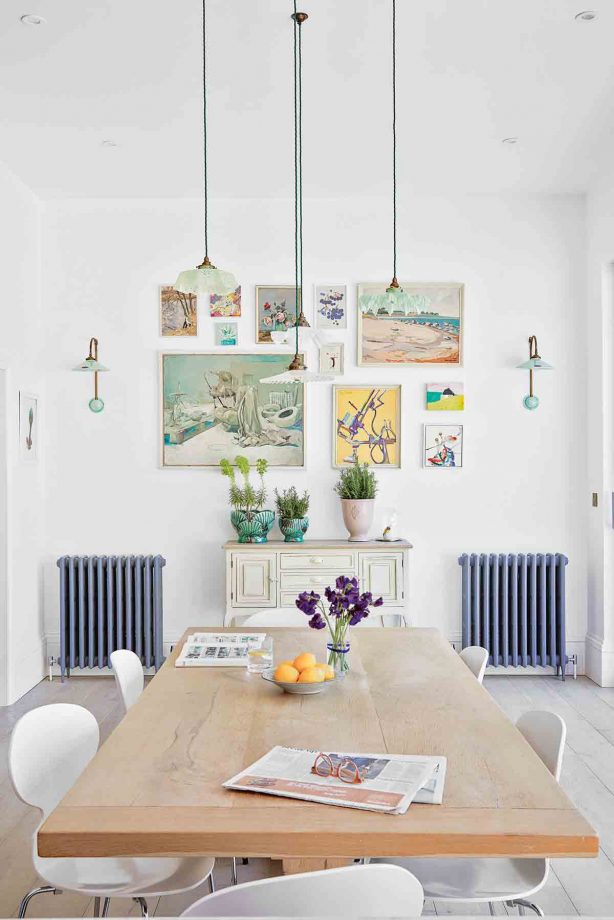
Get the look: The dining table is by DT-69. The Ant dining chairs are by Arne Jacobsen for Fritz Hansen at Republic of Fritz Hansen. The glass pendant shades are vintage finds. The wall lights are by Terre d’Hautaniboul. The flooring is from Timbered.
17. Collectors' Display
A collection of Rory Dobner plates creates a striking display, while the monochrome palette and signature style help to keep it feeling cohesive and uncluttered.
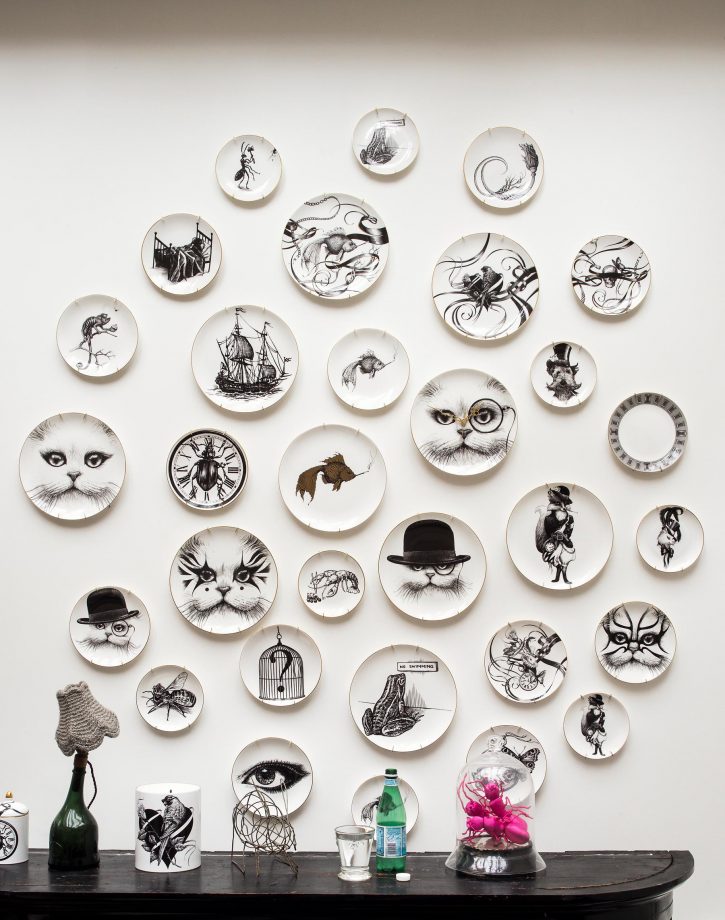
Get the look: Plates by Rory Dobner
18. Wall Of Skulls
For an even more gothic take, this cluster of deer skulls create an eery gallery wall.

Get the look: The bed is from And So To Bed. The overhead lights were made by Matt – the Feiss Adams 3 light pendant at Kes Lighting is similar. The velvet print cushions are by House of Hackney.
19. Monochrome
Again, this gallery wall has a cohesive and organised feel due to the restrained colour palette. The black frames are further echoed in the black wire chair and floor lamp.
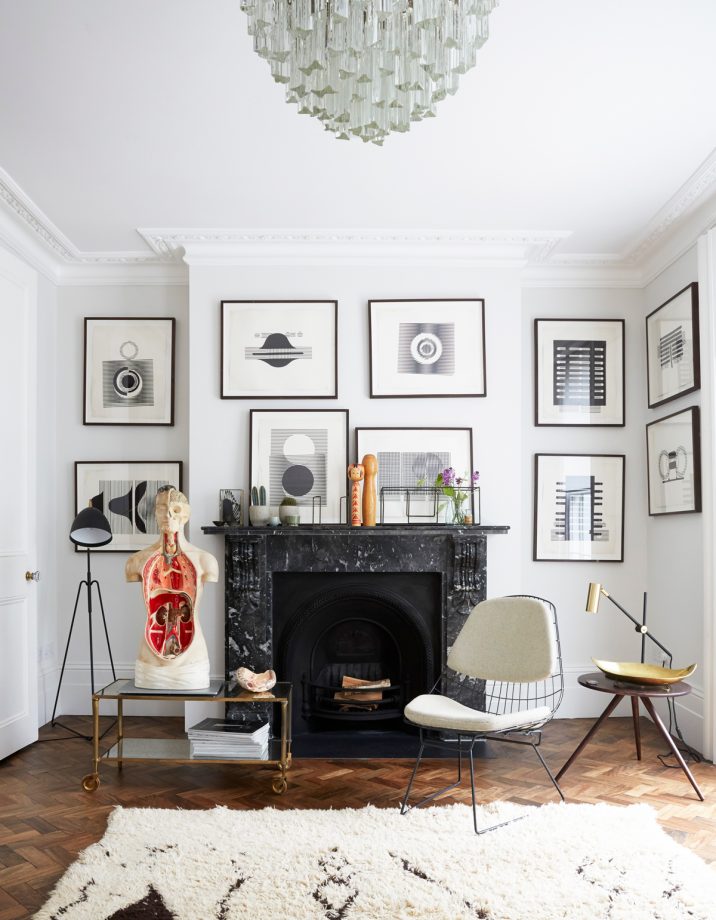
Get the look: The vintage Murano chandelier and stainless-steel sm05 chair by Cees Braakman are from Atomic Antiques.
20. Painted Backdrop
Purple offers the perfect backdrop for the eclectic mix of high- and low-end artwork in this study. It helps make the artworks pop without seeming too loud or busy. The artworks come from junk shops as well as galleries, creating a deliberate collector’s mix.
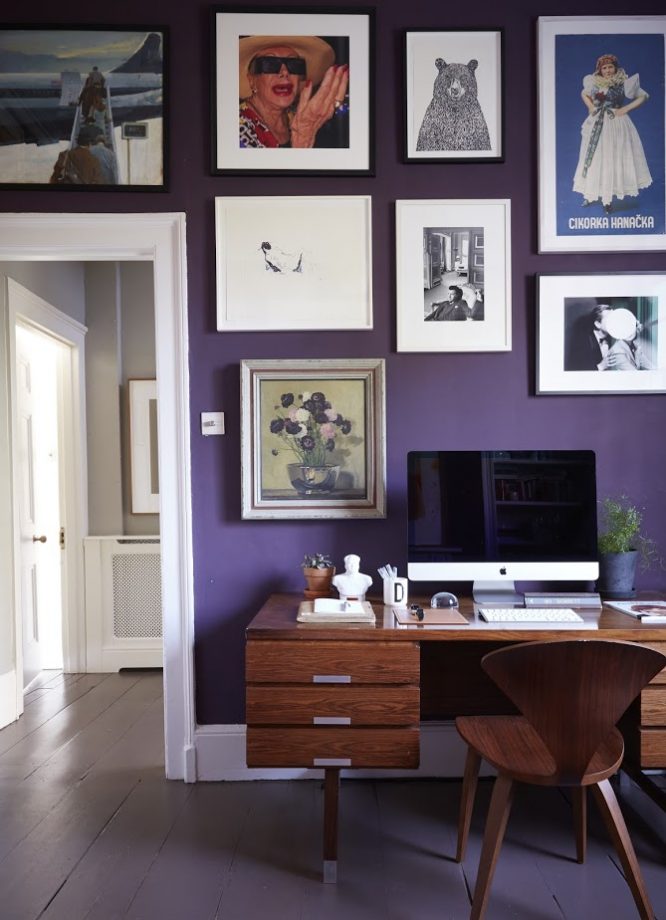
Get the look: The walls are painted in Farrow & Ball’s Pelt estate emulsion. The mid-century Brasilia rosewood desk by Danish designer Kai Kristiansen is from Two Columbia Road. Find the Cherner chair by Norman Cherner at Aram Store.
- See more living room colour ideas
21. Bold Blue
Similarly, this bold blue hue creates a calming and cocooning effect, and seemingly swallows up the gallery wall – preventing it from feeling too obvious.
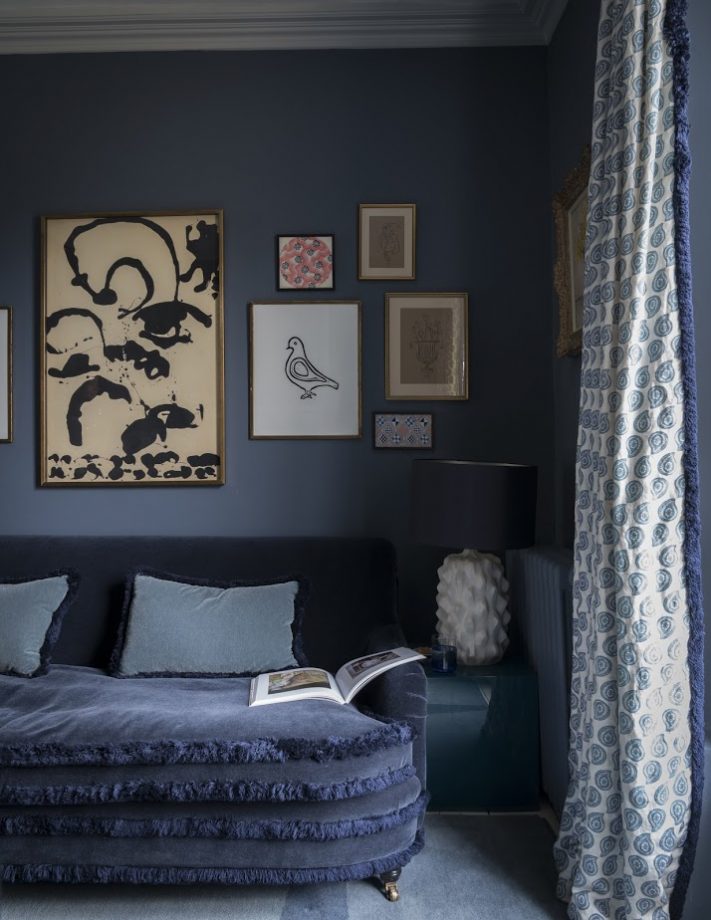
Get the look: The sofa is by George Smith, trimmed with a linen fringe by Nicky Haslam. This is the Pigeon print by Hugo Guinness at John Derian. The Baobab table lamp is by Porta Romana. The curtains are made in Raoul for George Smith’s Madras in Delft.
- Explore more dark living room ideas
22. Neon
This gallery wall takes a completely opposite approach; multi-coloured frames inject fun and personality, while a structured grid formation creates a cohesive and organised look.The series of cartoons – framed in neon – is by Terence ‘Larry’ Parkes.
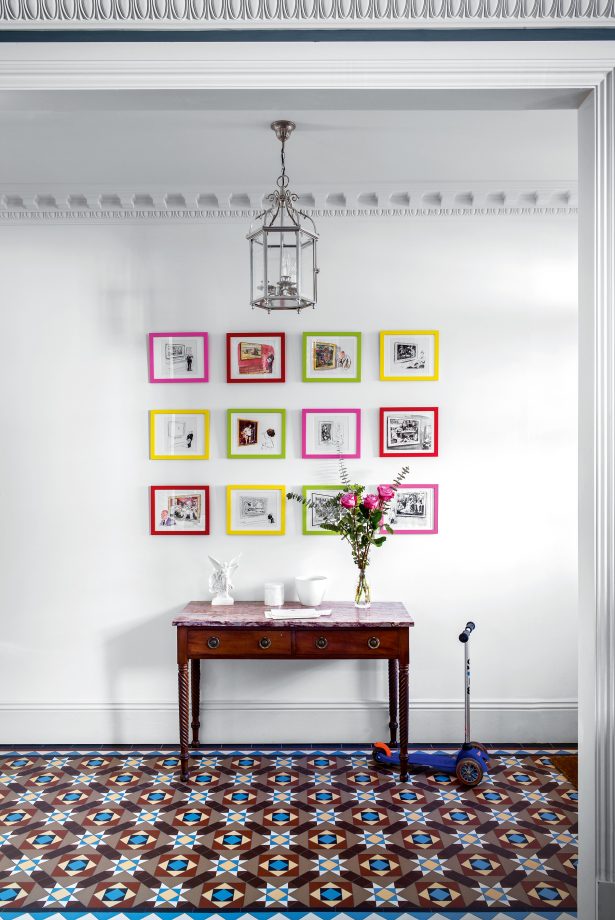
Get the look: The Victorian-style tiles are from the London Mosaic. The table is an Irish antique. Find Larry cartoons at Chris Beetles Gallery.
23. Family Affair
The Novogratz family added interest to a loft staircase by creating a gallery wall of family photos, all in black frames.
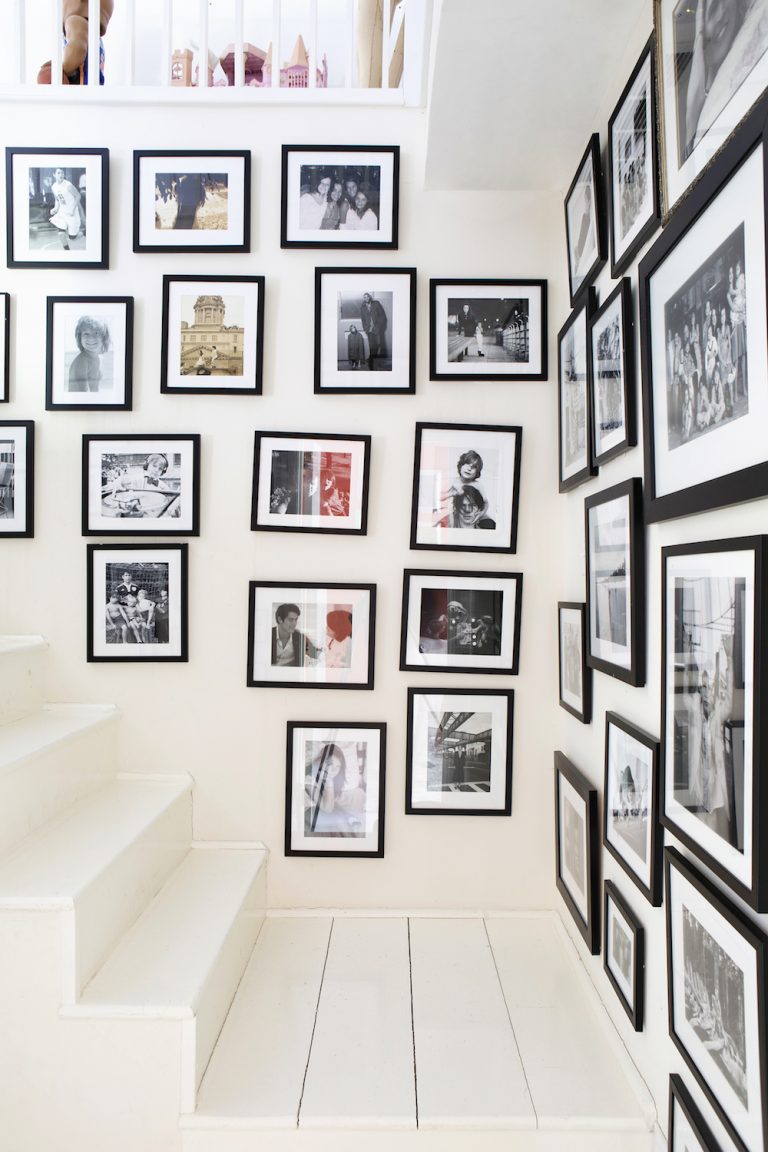
24. Three In A Row
A matching trio of illustrations on brown paper, framed in dark wood frames, create a calming and restful backdrop in this dining space.Dark-wood finishes and a chic rust-effect steel table complement each other perfectly, while the artwork makes a striking visual display.
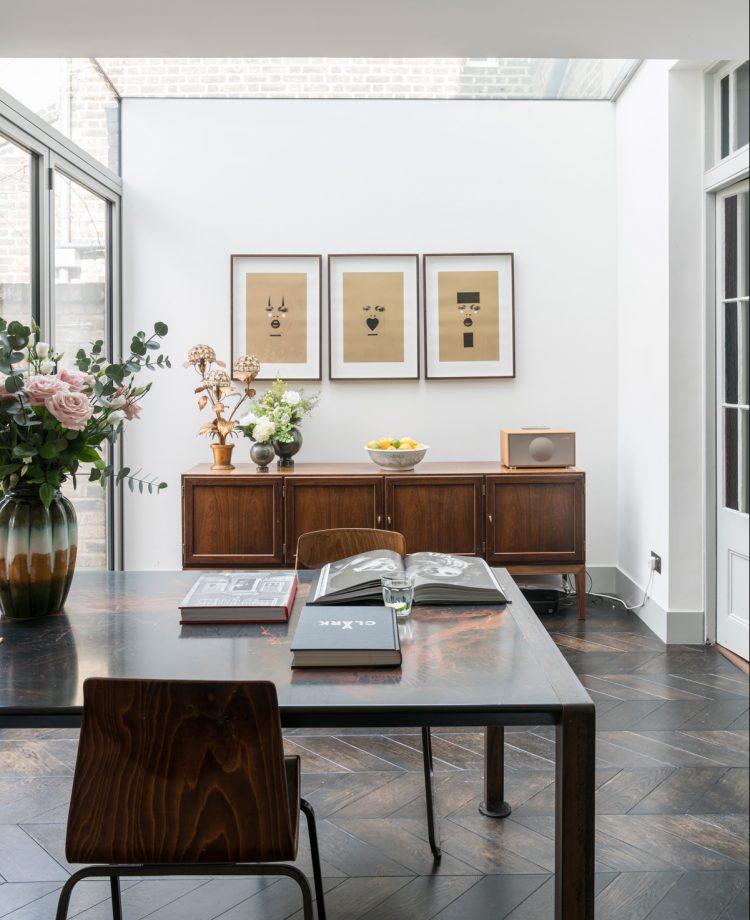
Get the look: This is the Terni table by Heron Parigi. The chairs are from Liberty. The prints are by Alaric Hammond. Try Element7 for stained parquet flooring in this style.
25. All White
A gallery wall of black & white family photos, all framed in white, hangs above this wall-mounted sideboard in a master bedroom. The effect is calm and grown-up.
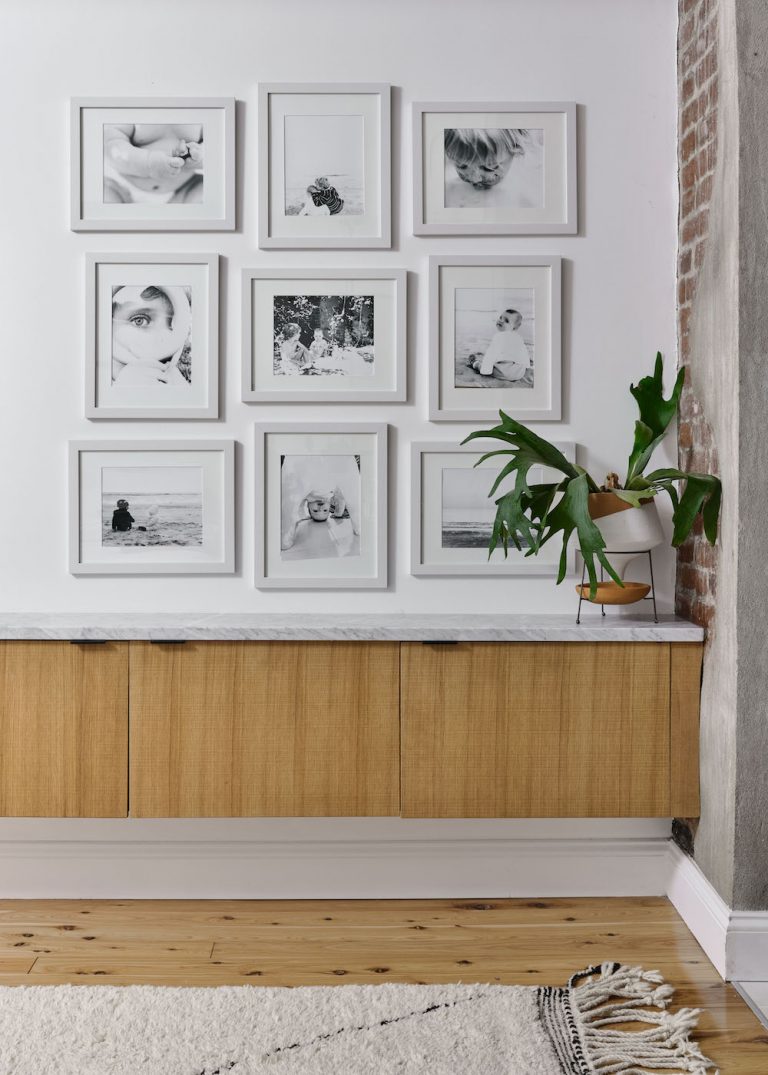
- See more white bedroom ideas
26. Butterfly Effect
Along the same lines, this collection of framed butterflies sits together perfectly. By framing the top half of a doorway it doesn't become the focal point of the room, and blends in to the rest of the room.
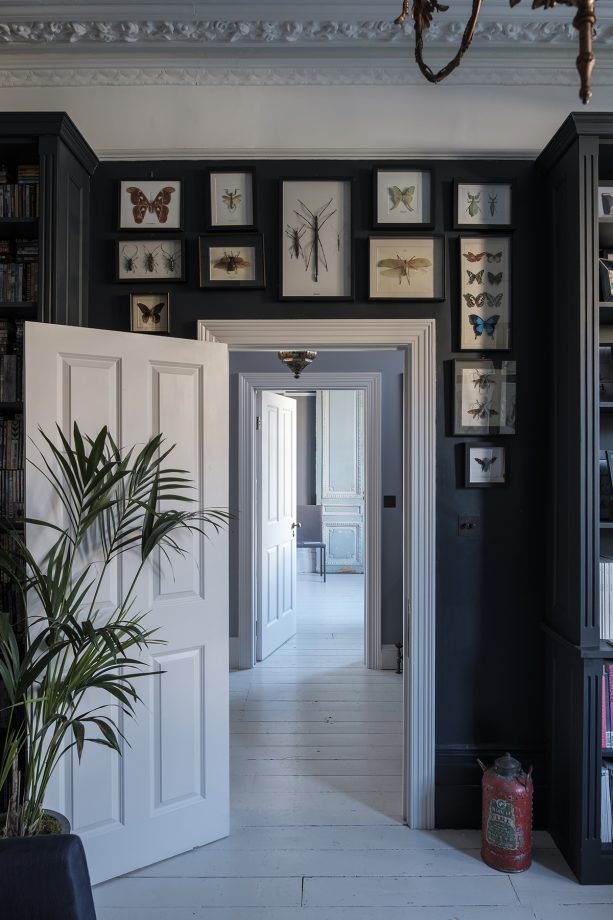
Get the look: Some of the taxidermy butterflies are from Dig Haüshizzle in Bristol, some were sourced on eBay.
27. Pretty Pastels
Serene pastels and white frames create a much softer and more neutral space in this living room.
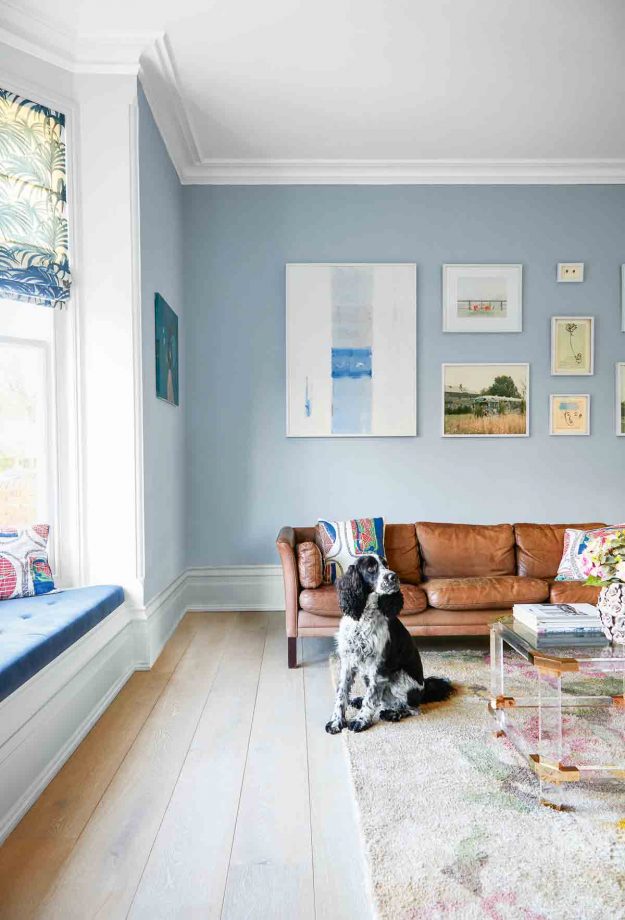
Get the look: The walls are painted in Parma Gray estate emulsion by Farrow & Ball. The sofa is vintage Stouby. The rug is by Designers Guild. The cushions are made in Josef Frank’s Manhattan fabric. The photographs are by Nick Meek.
- Explore more of this pastel-coloured Victorian terrace home in Kent
28. No Rules
This particular gallery wall has completely thrown out the rule book. It mashes up vintage family photos with illustrations, initials, mirrors, wall tiles and even taxidermy.
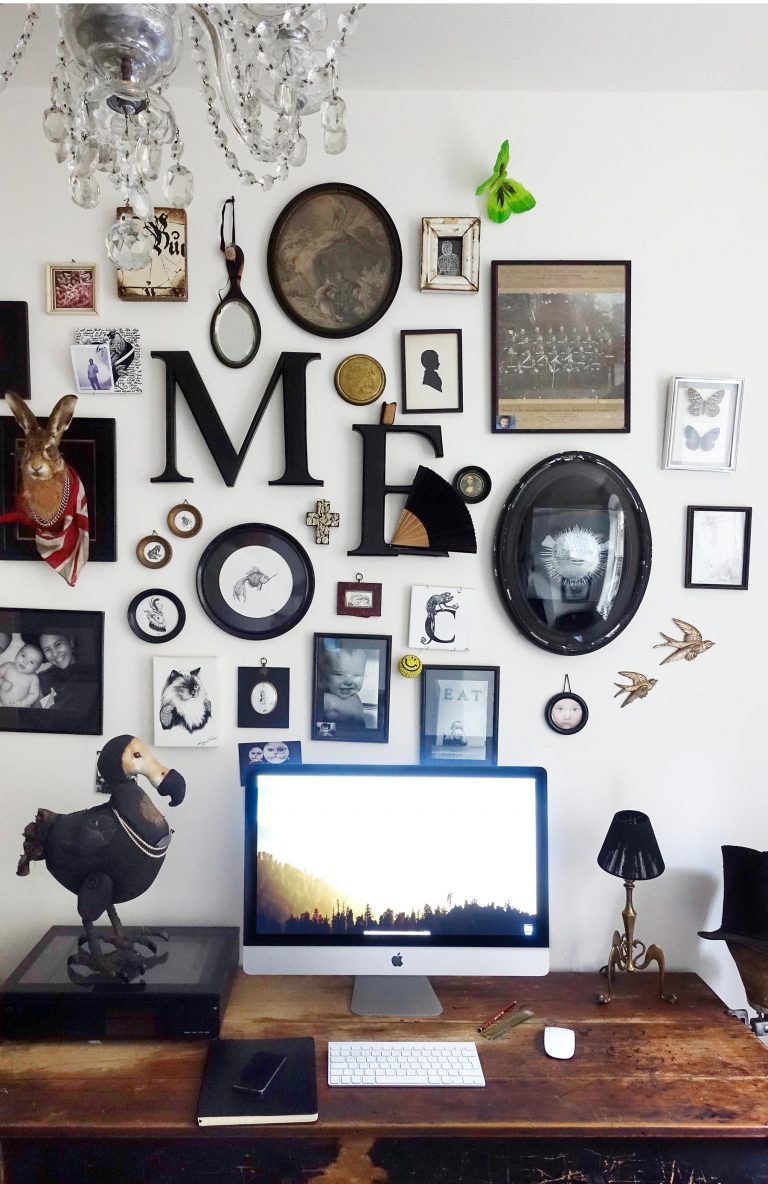
Get the look: The dodo is by Mister Finch. The frames and lamp are vintage finds.
- See more home office decorating ideas
29. In the mix
This traditional style gallery wall adds a funky focal point and makes the most of otherwise wasted wall space. The eclectic group of pictures include postcards by artists such as Billy Childish, from the Royal College of Art’s Secret sale. All black frames help tie the scheme together.
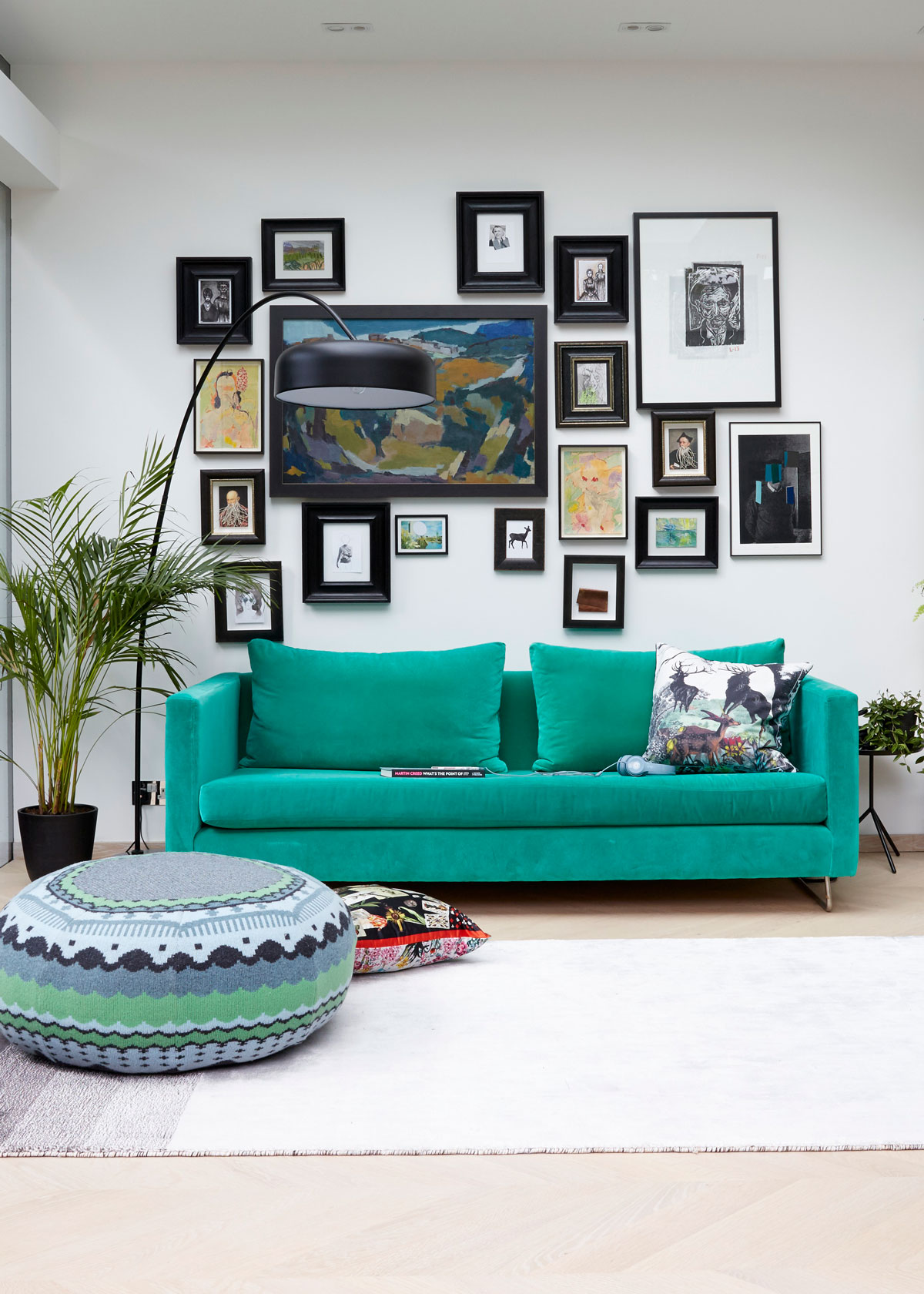
Get the look: The sofa, rug and cushions are by Designers Guild. The Donna Wilson pouffe is from SCP. Similar art can be found at london.secret.rca.ac.uk, where you can browse the postcards and register as a secret buyer.
30. Beehive
No all gallery wall ideas require uniformity, but the regularity of spacing here is pleasing. The framed hand drawn bees are by Ryan Chadwick.
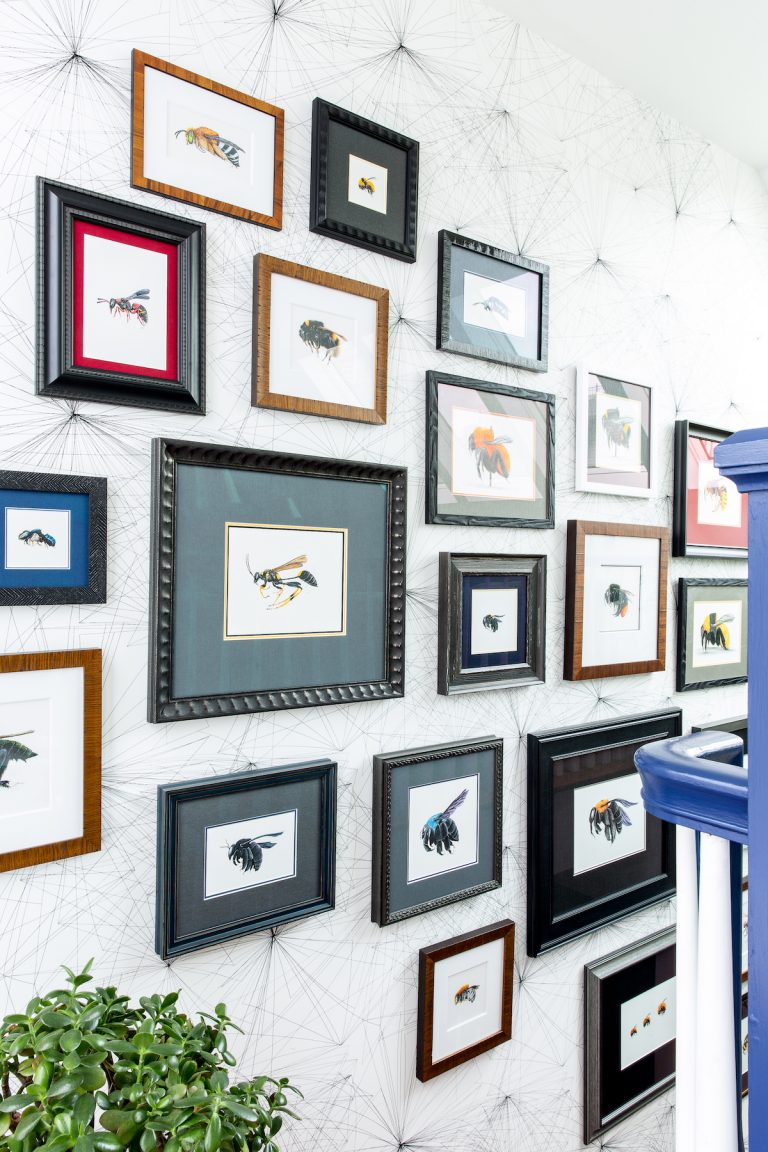
Get the look: This is the black and white Voyageur Snowscapes wallpaper by Jill Malek.
31. Neat and Tidy
Similarly, a neat and tidy grid of framed butterflies create a striking and colourful feature wall in this hallway.
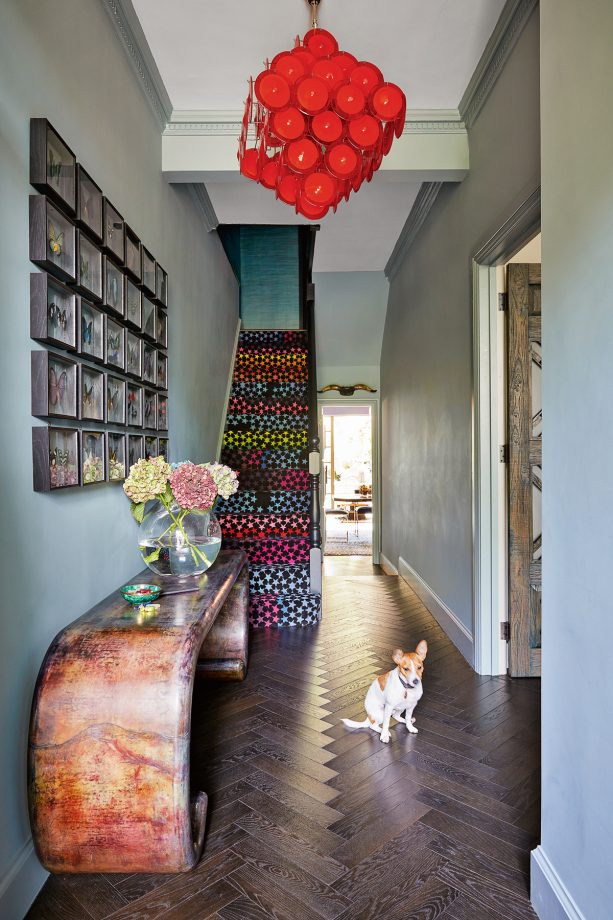
Get the look: The stair runner was made out of a rug by Solange Azagury-Partridge. The vintage Seventies chandelier is by Vistosi. The walls are painted in Oval Room Blue estate emulsion by Farrow & Ball. The butterflies were custom-framed.
32. Invisible Box
A mix of framed photographs, children' drawings, illustrations, maps and even a road sign create an eclectic and personal gallery wall in this living room. The all black frames help keep it cohesive, plus the pieces are all kept within an invisible rectangle – any straying artworks would send the wall off balance.
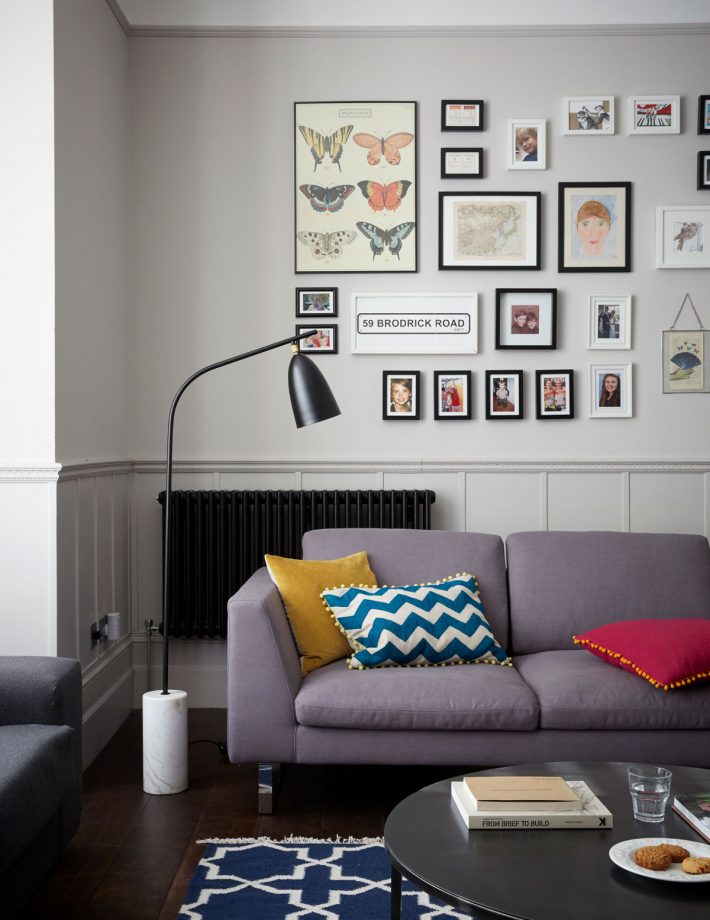
Get the look: This is the Zeia Navy Tile rug by Graham and Green. The floor is burnt oak from White & White. The walls are painted in Elephant’s Breath estate emulsion by Farrow & Ball.
33. Photo Wall
Columns of black and white photography inject interest and a touch of glamour in this Moroccan-style arched doorway.

Get the look: The collection of iconic black-and-white photographs include portraits of Diana Vreeland by David Bailey, and Andy Warhol and Hugh Hefner by Peter Strongwater.
34. Mix and Match
A mix of prints in no particular order and with contrasting coloured frames creates a dash of organised chaos in this otherwise calm office.
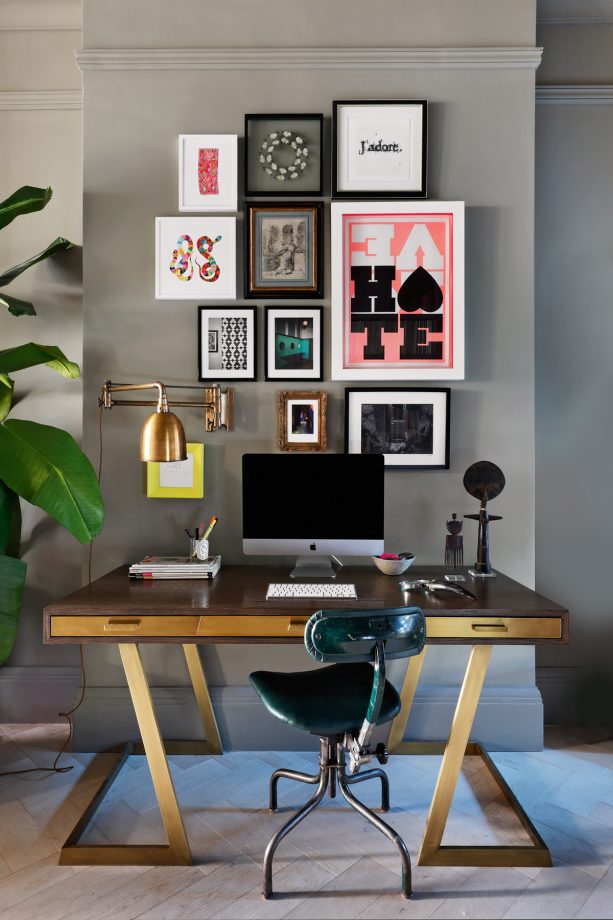
Get the look: This is the Onegin desk by Julian Chichester. The vintage desk chair is from Jensen & Ballantine. The articulated wall light is from Felix Lighting.
- See more stylish home office ideas
35. Layer
Who said you can't layer framed prints over wallpaper? It might not sound like a good idea, but this dining room corner proves that it can be done.

Get the look: Find similar artwork at Yellow Korner. The photos of Africa are by Aernout Overbeeke. The poem is by Frieda Mulisch. The antique chest was found in Syria.
36. Bathroom Beauty
This bathroom is quite a large space, so the wall of pictures makes it feel more welcoming and personal.

Get the look: The antiqued mirror-glass wall tiles are from Fired Earth. The bath is from CP Hart, teamed with a Bathstore bath filler.
37. Pinboard
Instead of an organised grid of framed pictures, this big picture board offers a much more fluid approach, and can be ever evolving.

Get the look: The antique glass desk came from Lerebours Antiques and the 1969 Tulip Karmstolar chair was a vintage find. The rug is from Madeline Weinrib.
- See also: 5 things we love about Bobbi Brown's super chic NYC office (psst! It's full of gallery wall inspiration...)

Lotte is the former Digital Editor for Livingetc, having worked on the launch of the website. She has a background in online journalism and writing for SEO, with previous editor roles at Good Living, Good Housekeeping, Country & Townhouse, and BBC Good Food among others, as well as her own successful interiors blog. When she's not busy writing or tracking analytics, she's doing up houses, two of which have features in interior design magazines. She's just finished doing up her house in Wimbledon, and is eyeing up Bath for her next project.